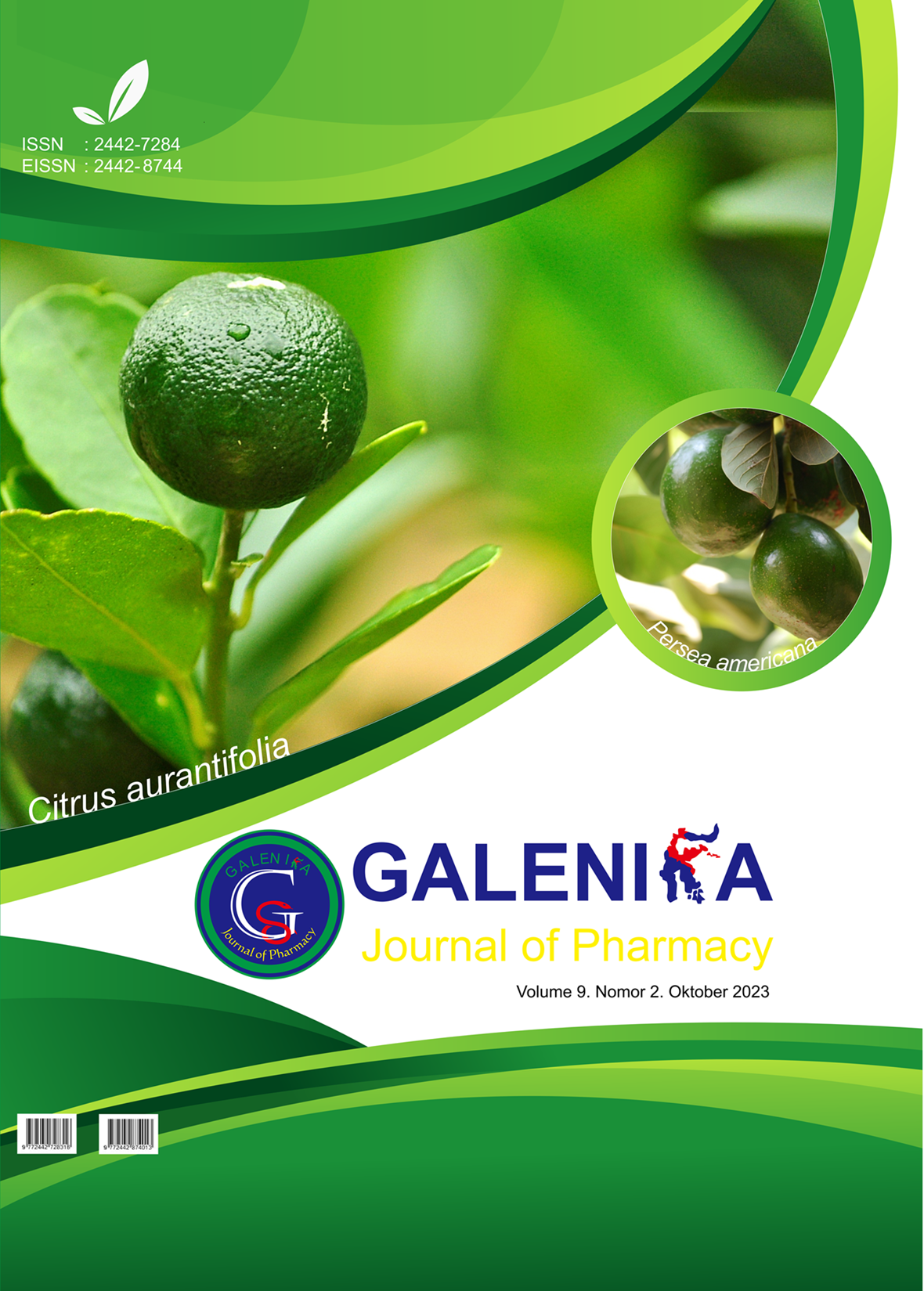Main Article Content
Abstract
Background: Nasopharyngeal Carcinoma (NPC) is a malignant tumor that grows from epithelial cells that line the surface of the nasopharynx and has a tumor position close to the base of the skull, vital structures, and anatomical locations that are difficult to reach and various symptoms are the cause of increased patient mortality and morbidity rates. This research aims to identify the most effective chemotherapy effect on reducing tumor mass in nasopharyngeal cancer patients. Material and Methods: This study was conducted retrospectively based on patient medical record data from January 2019 to December 2021 at Dr. Wahidin Sudirohusodo General Hospital. Inclusion criteria included NPC patients who received cisplatin, carboplatin, paclitaxel, and docetaxel chemotherapy and had complete data on tumor mass size before and after receiving chemotherapy from Series I to Series VI. The resulting assessment of tumor mass size was further categorized using RECIST. Results: A total of 166 NPC patients met the inclusion criteria. The results of the study obtained that NPC patients suffered more in men than women, most NPC patients were aged (41-50), Stage IVA had the highest percentage found in NPC patients, Histopathology based on WHO type III was most commonly found in 109 patients, 70 patients used the Cisplatin+Paclitaxel chemotherapy regimen, 55 patients used the Cisplatin+Paclitaxel chemotherapy regimen had a partial tumor mass response. Conclusions: The combination of Cisplatin + Paclitaxel has the most partial response to the tumor mass of NPC patients at Wahidin Sudirohusodo General Hospital, Makassar.
Keywords
Article Details

This work is licensed under a Creative Commons Attribution-NonCommercial-ShareAlike 4.0 International License.
References
- Cai, Z. et al. (2022) ‘The Prognostic Impact of Combined Tumor-Infiltrating Lymphocytes and Pretreatment Blood Lymphocyte Percentage in Locally Advanced Nasopharyngeal Carcinoma’, Frontiers in Oncology, 11. Available at: https://doi.org/10.3389/fonc.2021.788497.
- Farhat et al. (2020) Karsinoma Nasofaring. 1st edn. Edited by Farhat et al. Jakarta: Buku Kedokteran EGC.
- He, Y. et al. (2018) ‘Analysis of short-term efficacy as defined by RECIST and pathological response of neoadjuvant chemotherapy comprised paclitaxel and cisplatin followed by radical surgery in patients with locally advanced cervical cancer’, The Journal Medicine, 0(May), pp. 0–5. Available at: https://doi.org/http://dx.doi.org/10.1097/MD.0000000000010913.
- Noviyani, R. et al. (2017) ‘Efek Kemoterapi Bleomisin, Vincristin, Mitomisin dan Karboplatin terhadap Massa Tumor dan Infiltrasi Parametrium pada Pasien Kanker Serviks: Studi Kasus di RSUP Sanglah Denpasar’, Indonesian Journal of Clinical Pharmacy, 6(3), pp. 164–170. Available at: https://doi.org/10.15416/ijcp.2017.6.3.164.
- Rouh, T.G. et al. (2017) ‘Trans-arterial chemoperfusion for the treatment of liver metastases of breast cancer and colorectal cancer: Clinical results in palliative care patients’, World Journal of Clinical Ongcology, 8(4), p. 343. Available at: https://doi.org/10.5306/wjco.v8.i4.343.
- Rusli, L. V. et al. (2021) ‘Analisis Hubungan Ca 15-3 dan Respon Kemoterapi Neoadjuvan pada Pasien Kanker Payudara Stadium Lanjut Lokal’, e-CliniC, 9(2), pp. 466–471. Available at: https://doi.org/10.35790/ecl.v9i2.34659.
- Shead, D.A. et al. (2019) NCCN Guidelines for Patients Nasopharyngeal Cancer Haed And Neck Cancer Series. National Comprehensive Cancer Network.
- Tang, L.Q. et al. (2015) ‘Establishment and Validation of Prognostic Nomograms for Endemic Nasopharyngeal Carcinoma’, Journal of the National Cancer Institute, 108(1), pp. 1–10. Available at: https://doi.org/10.1093/jnci/djv291.
- Yang, H. et al. (2020) ‘Prognostic value of the tumor volume reduction rate after neoadjuvant chemotherapy in patients with locoregional advanced nasopharyngeal carcinoma’, Oral Oncology, 110. Available at: https://doi.org/10.1016/j.oraloncology.2020.104897.
- Yao, J.-J. et al. (2021) ‘Development and Validation of Web-Based Nomograms to Precisely Predict Survival Outcomes of Non-metastatic Nasopharyngeal Carcinoma in an Endemic Area’, Cancer Research and Treatment, 53(3), pp. 657–670. Available at: https://doi.org/10.4143/crt.2020.899.
- Yusuf, M. and Foris, A. (2020) ‘Increasing Neoadjuvant Chemotherapy in Nasopharyngeal Carcinoma Patients’, Increasing Neoadjuvant Chemotherapy in Nasopharyngeal Carcinoma Patients Muhtarum, Vol 11, Is, p. 4. Available at: https://pubmed.ncbi.nlm.nih.gov/28421114.
- Zhu, Q.Y. et al. (2021) ‘Advances in pathogenesis and precision medicine for nasopharyngeal carcinoma’, MedComm, 2(2), pp. 175–206. Available at: https://doi.org/10.1002/mco2.32.

